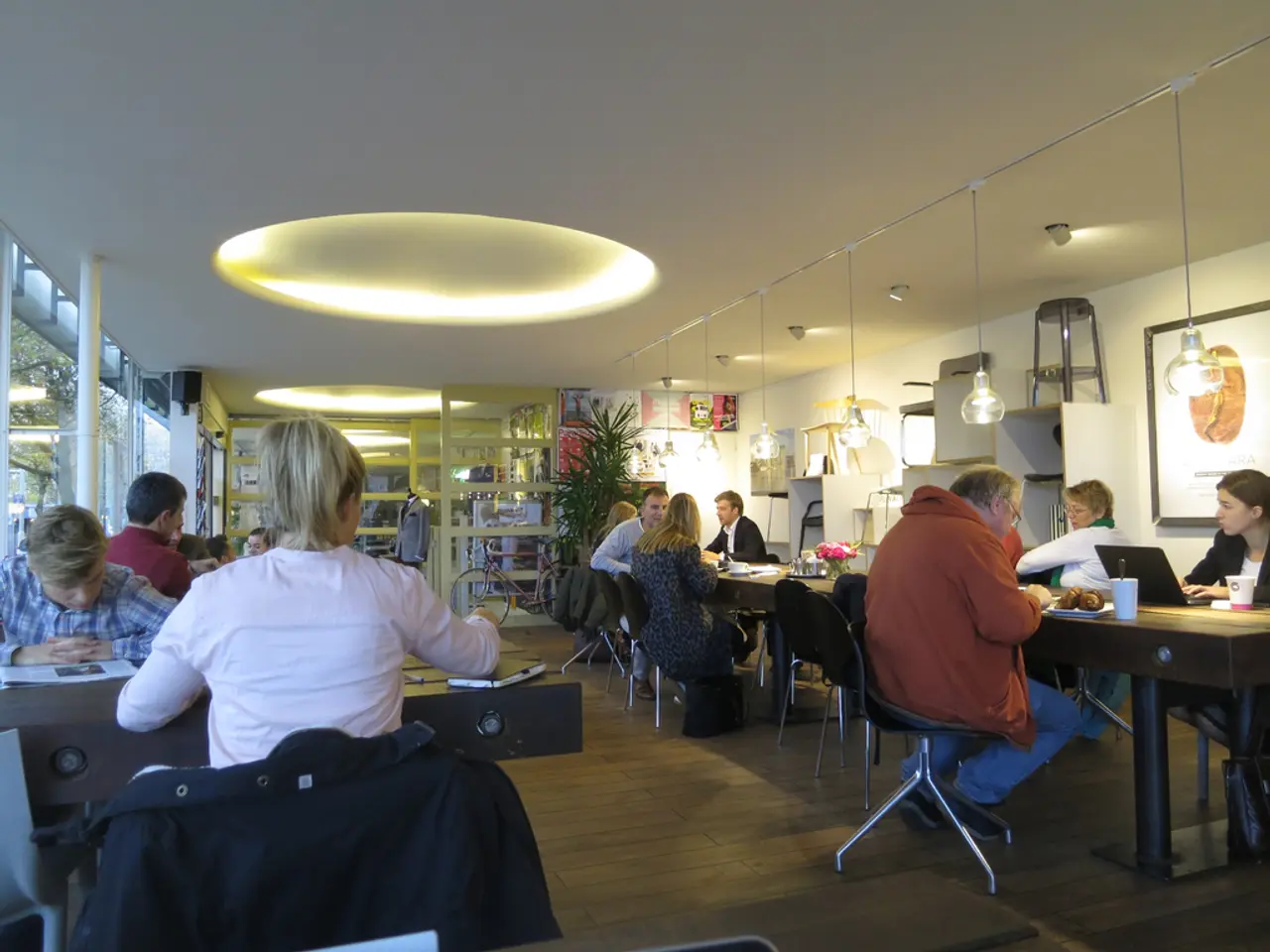Transforming Home Offices for Efficiency: Strategies for Crafting a Cozy and Effective Work environment
In the modern world of remote work, designing a workspace that supports both mental and physical well-being and boosts productivity is essential. Here are seven key elements to consider when creating an effective home workspace.
**1. Choosing the Right Location**
Select a quiet, well-lit corner, spare room, or dedicated area with enough space for your desk, chair, and storage. Ensuring access to natural light is crucial to enhance mood and reduce eye strain.
**2. Investing in Ergonomic Furniture**
Use an adjustable desk at roughly elbow height when seated, and choose an ergonomic chair that supports good posture. Proper seating reduces fatigue and physical discomfort, boosting productivity.
**3. Optimizing Lighting**
Prioritize natural light but supplement with adjustable task lighting to avoid glare and shadows. Bright, well-distributed light keeps you alert and focused.
**4. Smart Layout and Organization**
Arrange furniture to support your work routine efficiently, minimizing distractions and facilitating movement. Use vertical storage like shelves or tall bookshelves to maximize small spaces and keep clutter away.
**5. Minimizing Distractions**
Create a distraction-free environment by setting boundaries with family or housemates. Consider noise-cancelling headphones or soundproofing if needed to maintain concentration.
**6. Customizing for Comfort and Productivity**
Personalize your space with items that inspire and motivate you without causing clutter. Include plants or artwork for a calming, pleasant environment. Ensure your screen is positioned at eye level to avoid neck strain, and keep frequently used items within reach.
**7. Supporting Movement and Breaks**
Incorporate options for standing or moving during the day, like adjustable desks or space for light stretching. Encouraging movement enhances well-being and reduces the negative effects of prolonged sitting.
By following these principles, you can create a functional, comfortable, and inspiring home workspace that supports both your well-being and work performance in remote settings. Good lighting, a supportive chair, and a desk at the right height are essential for maintaining good posture, while personal touches and plants can make the workspace feel more comfortable and inviting.
Remember to take regular breaks, disconnect at the end of the day, and maintain a daily routine to help maintain boundaries between work and personal life. Adding tools like a footrest, monitor riser, or a sit-stand desk can further reduce tension and help maintain energy. Keeping the workspace tidy can help keep the mind focused and reduce distractions.
A well-designed home workspace is an investment in your overall well-being and productivity. By prioritizing your comfort and productivity, you'll be better equipped to tackle the challenges of remote work and find success in your home office.
To further boost your overall well-being and productivity, consider integrating elements of health and wellness into your workspace. Incorporate fitness and exercise by incorporating a yoga mat or resistance bands within reach for quick breaks.
Maintaining a healthy lifestyle is essential, so arrange a small refrigerator or water cooler to keep healthy snacks and water readily available.
Implementing green living practices can improve the environment of your home office. Place indoor plants that are known for improving air quality, such as snake plants or spider plants, on your desk or nearby shelves.
Consider dedicating a portion of your workspace to a mini-library of books on science, health-and-wellness, home-and-garden, or music, fostering continuous learning and a soothing ambiance. These small changes can make a significant impact on your physical, mental, and emotional well-being while working from home.




